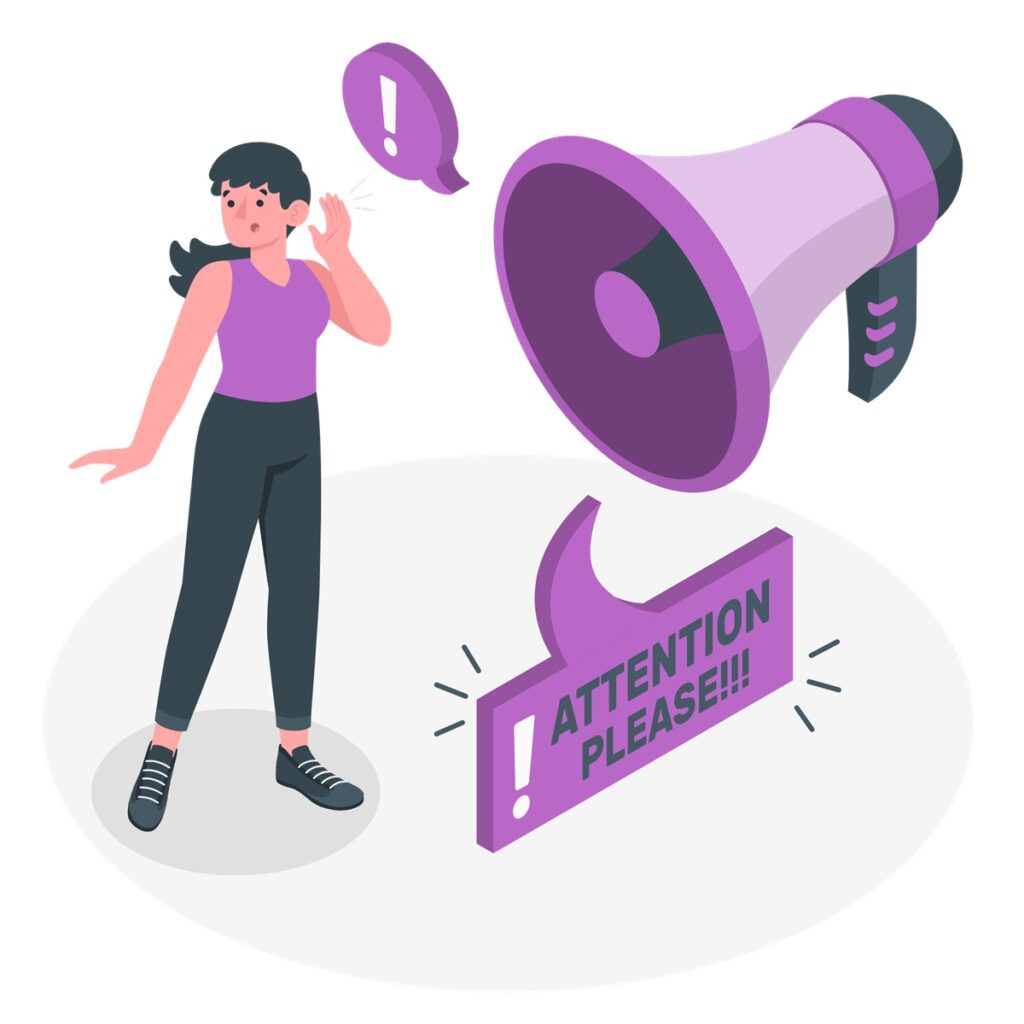You’ve sent the email. You’ve had the meeting. You thought everyone was on the same page. Then, boom. Things go sideways. Project stalls. Deadlines are missed. Why? Because of a communication breakdown. It’s a huge problem, and it’s happening all the time.
Consider these numbers. Recent data shows that a big chunk of business leaders, 66%, face some kind of miscommunication daily. Almost half, 48%, deal with it many times each day. And every single business leader and worker, 100%, says they hit miscommunication at least once a week. This isn’t just a small bother. It costs businesses a lot. Some guess bad communication costs U.S. companies up to $1.2 trillion each year.
Even more simply, companies lose over $15,000 per person every year. This happens because of lost time, project delays, and missed chances. These aren’t just figures on a page. This directly hurts how much money a company makes. It affects how people feel at work. It slows everything down. If your team isn’t communicating well, they’re not working well.
What Is a Communication Breakdown?
A communication breakdown happens when a message doesn’t get from one person to another. Or, if it does, it’s not understood right. Think of a bad phone line. You speak, but the other person hears noise, something else, or nothing. It’s when what you mean to say doesn’t match what the other person hears.
This can happen in many ways. A simple spoken order gets changed in someone’s head. A quick email without enough facts leads to confusion. Even how you stand or move can cause it. A shrug from you might mean “I don’t know.” But to someone else, it could mean “I don’t care.” When these gaps in understanding appear, you get confusion, mistakes, lost time, and even fights. It’s a gap between what is said and what is understood.
Why Communication Breakdown Matters
Bad communication isn’t just annoying; it costs a lot and causes harm. When messages are not clear, tasks are not understood. This often leads to mistakes that take time and work to fix. Or work that has to be done again. Imagine building a house without clear plans. You’d be tearing down walls all the time. Work output drops a lot.
Studies show that good communication can boost work output by 25%. When communication is bad, the opposite happens: output suffers, and progress stops.
It also hurts people. Workers get upset, confused, and unhappy. They might feel ignored or unimportant. When people are unhappy, they often leave for other jobs. Many workers leaving cost companies a lot in finding, interviewing, and training new staff.
Also, when people don’t feel heard or told things, their spirits drop. This can mean less drive, less effort, and no joy for work. And of course, not understanding each other often leads to arguments and fights between team members. These fights can make work a bad place, spoiling the mood for everyone. It’s a bad cycle that hurts both the business and the people in it.
Major Causes for Communication Breakdown
There are many reasons why communication can fail. It’s not always one thing. Often, it’s a mix of problems.
1. Lack of Clarity
Sometimes, the message itself is the issue. It’s too unclear, too hard, or full of special words not everyone gets. If you don’t say what you mean simply and directly, people have to guess. And guessing, especially at work, often leads to mistakes.
For example, telling a new team member, “Just get it done fast” without telling them what “it” is, how to do it, or what “fast” means (an hour? a day? a week?) is a recipe for trouble. They might do the wrong thing, or do the right thing too late.
2. Information Overload
Too much information can be as bad as too little. Today, we get lots of emails, messages, alerts, and reports. When people get too much of this flow, they can’t handle it all well. Important facts get lost in the noise, or people just stop paying attention. It’s like trying to drink from a firehose – you just get soaked, and nothing goes in. Key messages can easily be missed when there are too many messages.
3. Poor Listening
Many people hear sounds, but they don’t truly listen to understand. They might be busy, thinking about what they’ll say, checking their phone, or just not paying attention to what’s said. When the listener isn’t focused, they miss important facts, small details, and even the main idea. This means the message never really lands as intended. It’s like throwing a ball at someone who isn’t looking – it just bounces off or goes right past them.
4. Emotional Barriers
Our feelings can mess with how we send and get messages. If someone is stressed, angry, upset, or just having a bad day, they might say things in a sharper way than they meant. Or they might read neutral messages with a negative filter.
Imagine someone already stressed getting a short email from their boss that says, “Need this now.” They might read anger or disappointment into it, even if the sender just meant to show it was urgent. This emotional filter twists the real message.
5. Different Communication Styles
Not everyone talks the same way. Some people are direct and like to get straight to the point. Others are more indirect, giving background or building a bond before giving the main message. Some like written messages, others like to talk face-to-face, and some like pictures.
If you talk to a direct person in a very indirect way, they might miss your point or get annoyed. Or the other way around. This difference in style can cause a lot of confusion and annoyance for both sides.
6. Lack of Feedback
After you share important information, especially instructions or new plans, actively ask for feedback or confirmation. Don’t just assume. Ask questions like, “Does that make sense?” or “Can you tell me in your own words what you understood the next steps to be?”
This gives others a chance to ask for clarification if they didn’t quite get it, and helps you check if your message landed as intended. It’s a simple but powerful way to prevent misunderstanding.
What Are the Effects of a Communication Breakdown?
When communication fails, things go wrong in a big way. The effects spread through a team, a company, and even reach customers.
1. Reduced Productivity
When people don’t know what to do or misunderstand tasks, they make mistakes. This means they have to redo the work, which wastes time. Things slow down, and less gets done. This hurts the company’s output.
2. Higher Employee Turnover
If employees feel ignored or frustrated by bad communication, they look for other jobs. High staff turnover costs companies a lot in hiring and training new people. People want to feel heard and valued.
3. Decreased Morale
Bad communication makes people unhappy. They feel disconnected from their team and company goals. This can lead to low motivation. A team with low morale doesn’t work well together.
4. Increased Conflict
Misunderstandings quickly turn into arguments. When people don’t get each other, tensions rise. Small issues can become big fights if not handled well. This creates a bad atmosphere.
5. Poor Customer Service
Communication problems don’t stop inside the company. They spill out to customers. Wrong orders, missed deadlines, or slow responses make customers unhappy. This hurts the company’s name and business.
This is especially true for corporate communication – how a company talks to the outside world. When a company’s messages are confusing or inconsistent, customers get frustrated, and trust breaks down.
6. Missed Deadlines
If instructions are not clear or information isn’t shared on time, projects fall behind. This costs money and can damage relationships with clients. Deadlines are important for staying on track.
How to Prevent Communication Breakdown
You can’t stop every small mistake or misunderstanding. People are complex. But you can build a stronger, better communication system within your team or company. It takes work, but it helps a lot.
1. Be Clear and Direct

This is basic. Say what you mean, and mean what you say. Use simple, direct words. Stay away from special words, short forms, or too hard sentences that might confuse people who aren’t experts in your field. Get right to the point without extra words.
If you have to tell something important, break it into small, easy parts. Always check that the message is easy to get from the listener’s side. Ask yourself, “Could this be misunderstood?”
This is vital whether you’re using oral communication in a meeting or writing an email.
2. Active Listening

When someone talks to you, truly listen to understand, not just to reply. Don’t cut them off. Give the speaker your full attention. Look them in the eye, if it fits the culture. Nod and use words like “I see” to show you are paying attention. After they finish, ask questions to be sure you understood correctly.
For example, “So, if I get this right, you need X by Y time, correct?” This helps them feel heard and makes sure you get the full, correct message.
3. Choose the Right Communication Tools & Channels

Not all messages are built for email. Some urgent facts? Those need a quick chat, in person or on the phone. Other things need a proper meeting, where everyone can talk and agree. For quick updates or simple questions, a fast message often works.
But for tough projects, where lots of people add ideas and make changes? A shared document or a project tool with comments might be your best bet. Always pick the tool that fits the message. Think about how urgent it is, how complex it is, and who’s getting it. Using the wrong tool can quickly cause problems.
4. Ask for Feedback

After you share important facts, especially orders or new plans, actively ask for feedback or to be sure. Don’t just think people understand. Ask questions like, “Does that make sense?” or “Can you tell me in your own words what you understood the next steps to be?”.
This lets others ask for a clearer answer if they didn’t quite get it, and helps you check if your message landed as meant. It’s a simple but strong way to stop misunderstandings.
5. Develop a Communication Plan

For projects or teams, set up rules for how you will communicate. Who talks to whom? What information goes where? How often? A clear plan makes sure everyone is on the same page. This plan should cover all forms of communication, including how you handle digital communication for speed and reach.
6. Promote a Culture of Open Communication

Make a place where people feel safe and easy to speak up, ask questions, and even say when they don’t understand something. Ask for questions and helpful disagreements. Make it okay to say “I don’t understand” or “Could you say that differently?”.
When people are not afraid of looking silly or getting in trouble for asking, breakdowns happen much less often. Leaders and bosses should show the way here by being open and easy to talk to.
Handling a Communication Breakdown Step-by-Step
Even with the best tries, breakdowns happen. It’s part of dealing with people. The key is knowing how to react and fix things fast when they do.
1. Acknowledge the Problem
First, admit there’s a breakdown. Don’t ignore it or act like it didn’t happen. The sooner you deal with it, the better. Say something like, “It seems we’re not on the same page here,” or “I think there might have been a misunderstanding.” This opens the door to fixing it and shows you want to deal with the problem right away.
2. Find the Root Cause
Why did it happen? Was your message unclear? Was it misunderstood by the receiver? Did someone not listen fully? Was there a distraction? Ask questions to get to the bottom of it. For example, “What did you hear me say when I told you that?” or “Where do you think we went wrong with this task?” Don’t blame; just try to understand.
3. Clarify the Message
Once you know where the misunderstanding was, say the first message again. Be very clear this time. Use different words if needed, make your language simpler, or give more facts. You might need to break it into smaller parts or use an example to show your point. The goal is to make sure the message is very clear this time.
4. Listen to the Other Person’s Perspective
Understand their side of the story. What did they think was happening? What did they understand the orders to be? Why did they act the way they did? Their view is key to fully seeing what went wrong and making sure you fix their misunderstanding. This also shows respect and helps build trust again.
5. Agree on Next Steps
Once things are clear and everyone gets it, decide what needs to happen next. Who will do what? By when? What steps are needed to fix the mistake or move forward? Write it down if needed to make sure everyone is now on the same path. This stops future confusion and gets things back on track fast.
6. Follow Up
Don’t just fix it and forget it. Check in later to make sure everything is going well and that the breakdown hasn’t caused new, unseen problems. A quick “How’s that task coming along now?” or “Did you get that fixed?” can catch any new problems early and show you care about clear communication.
Communication Breakdown Examples
Real-life examples help make this clear. These types of things happen every day.
1. The Silicon Valley Bank (SVB) Collapse (2023)
SVB was a bank for tech companies. When news of financial losses came out, the bank’s messages were too technical and full of jargon. They didn’t explain things simply. The CEO even told customers not to “panic” on a call, which often makes people do the exact opposite.
This bad communication, plus the fact that SVB went silent on social media as rumors spread, caused a huge panic among its tech clients. They pulled out $42 billion in deposits in one day, leading to the bank’s quick failure. It was a failure of clear storytelling and timely response.
2. The Bud Light Marketing Controversy (2023)
Bud Light partnered with a social media personality for a small promotion. The campaign was meant to be inclusive. But the company failed to understand its main customer base. When the partnership was announced, there was a huge backlash from some consumers who felt the brand was pushing a different agenda.
Bud Light’s initial response was slow and seemed to try and please everyone, which ended up pleasing no one. They didn’t communicate their message or plan. This led to boycotts and a big drop in sales because the brand’s actions didn’t align with what many loyal customers expected.
3. The United Airlines Passenger Removal (2017)
United Airlines had an overbooked flight. They needed to make space for crew members. When no one volunteered to give up their seat, they chose a passenger at random and tried to remove him. When he refused, airport security dragged him off the plane, causing injuries. Videos of the event went viral. United’s CEO’s first statement called it “re-accommodating” the passenger and defended the crew.
This was seen as heartless and tone-deaf. The public was outraged because United’s communication completely missed the mark on empathy and taking responsibility for the passenger’s rough treatment.
Conclusion
Communication breakdown is a quiet killer in any group, especially in business. It wastes money, hurts spirits, causes fights, and slows everything down.
But it’s not some strange power you can’t beat. It’s a problem you can fix. By being clear in your messages, listening well to others, picking the right tools for the job, and always checking that everyone gets it, you can cut down on these problems a lot.
And when a breakdown does happen – because they will – don’t panic. Deal with it head-on. Find out what went wrong, make the message clear, listen to understand, agree on how to fix it, and then follow up.
Good communication isn’t magic; it’s a skill you can learn and master. It takes steady work, but the gain in work output, happiness, and results is huge. So go on, be clear, and build better links.
